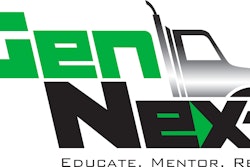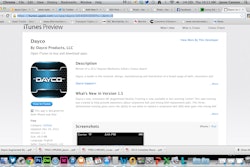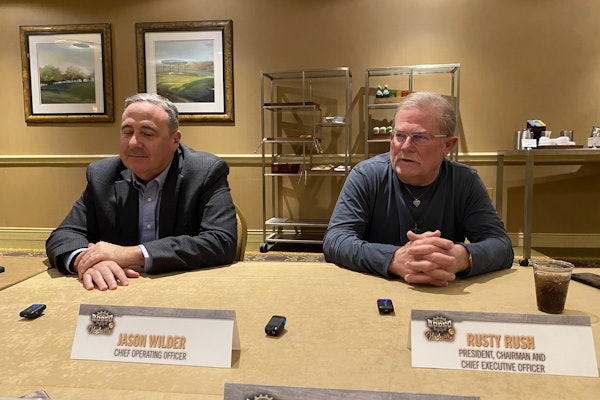by Pedro Ferro, senior vice president and president, Aftermarket & Trailer, Meritor
The aftermarket sector continues to be important and vital to the operating success and viability of fleets and their parts supplier partners, including warehouse distributors, OE dealers and independent service garages. Many motor carriers are doing more business with warehouses and mini-parts distribution centers (PDCs). They want to maximize tractor and trailer life and uptime from their current vehicle roster.
Warehouse distributors, dealers, fleets and other end-users are being squeezed at every turn as they strive to increase margins and at the same time reduce costs and working capital. Suppliers that are true “aftermarket survivors” must flourish in this tough market by staying true to their convictions of high parts availability and responsive delivery.
Owners with an average vehicle age of nine to 10 years are focused on quality replacement parts availability and overall lifecycle costs. They also want a supply distribution channel with appropriate product support, counsel and expertise. Fleets have “discovered” the total cost of a parts purchase ̶ even the sourcing, inventory requirements, order processes and shipping costs. They know full well that comprehensive parts portfolios having low-cost, too-good-to-be-true pricing comes with issues of quality, support, resources, availability and backup. More than ever, astute vehicle owners demand greater before- and after-the-sale support.
A number of North American aftermarket trends has impacted our entire business segment and its customers. But suppliers are managing and in some cases “attacking” with smart new business and supply practices:
Growth of Private Brands in the Aftermarket. Most OEMs and many large independent distributors have created their own parts brand for several reasons to add speed to repairs, drive service business into the dealerships and stores and to offer a new choice. Meritor also supports and supplies some of these brands, primarily in our areas of expertise such as undercarriage and drivetrain parts. Where applicable, we work to uphold quality in the Meritor product portfolio and to reinforce the brand strength of Meritor products.
Greater Influence of Information Services on the Parts Business. More fleet operators have become comfortable with shopping and buying their parts on the Internet and often go online to make comparisons. Whether looking for parts availability or learning and training tools, online information continues to play a greater role in the aftermarket. The successes of online retailers like Amazon.com have raised expectations for anyone who uses the Internet to compare products and place orders.
Many suppliers have online catalogs and ordering systems. In our case, customers can use Meritorpartsonline.com to place orders, check product availability and the status of a delivery, print invoices, view in-depth technical information and see enlarged views of products and assemblies. Dealers and independent shops have equal access to general service and repair information for Meritor products. Online channels have also contributed to Meritor’s ability to step up customer service with responsive call centers that provide first-call resolution, follow-up resolution within 24 hours, order board management and e-commerce functionality.
While the commercial vehicle industry may have been slow to embrace online technologies, it’s certainly catching up quickly with advanced systems involving e-commerce, global product sales, voice recognition and other capabilities.
Appeal of All-Makes ̶ Where it Makes Sense. The “all-makes concept” can impact a motor carrier’s bottom line. Today’s truck operators serve more markets, offer more services and support more applications than ever before. It’s not practical for them to maintain an inventory of genuine replacement parts spanning the multiple brands of today’s mixed fleet. When suppliers implement the concept of all-makes parts, truck operators can enjoy the benefits of “one-stop shopping for good-better-best quality,” while dealers and distributors can streamline inventory and capture more business regardless of a fleet’s brand composition. Consider the intrinsic and pragmatic value of one phone number, one center of expertise, one website and one trusted in-the-field representative. In particular, second and third vehicle owners are turning to “value brands” or all-makes parts due to lower costs, proven performance criteria and extensive laboratory testing of parts. “Good-enough” parts typically don’t hurt on-highway fleets because the parts usually take the vehicles through to trade. The refuse industry tried “good enough,” but after finding the price compromise equaled shorter component life, made a quick retreat back to “genuine” long-life components.
Vocational strategies. To deliver application-specific requirements for transit, utility, military and municipal vehicles, suppliers must know and prepare for specific vocational demands. One positive move has been the spec’ing counsel and assistance provided by the various component manufacturers – exactly which parts and models match up better with moving one freight load or another. Field representatives use spec’ing software to help determine which components will deliver the best performance for the way a vehicle is being used at the time of repair.
Continued growing use of remanufactured components. The addition of Meritor Green as a new brand and product series differentiator is a proof point on the growth in popularity of remanufactured components, especially in older vehicles. Key advantages include lower cost, nationwide warranty and reliable quality. Remanufactured truck and trailer components are products of a process that includes disassembly, cleaning, rigorous inspection and qualifying, in addition to replacement, reassembly and testing. These components are ideal for customers who want performance, service life and warranty support without the cost of new components. Core recovery and management remains a specialty and, quite frankly, a requirement for successful use of remanufactured components. Remanufacture of trailers, chassis and even tractors built with glider kits is a new trend in the aftermarket business.
Three new trends:
1) “Electronification.” As more fleet vehicles are equipped with advanced electronics for vehicle diagnostics to enhance operating efficiencies, there could be opportunities for the aftermarket to keep these systems serviced and in ideal shape. Vehicles with these systems will require even more electronic diagnostics capability and software-on-demand, such as delivery of calibration codes at service locations. Just as OEMs strive to maximize performance and minimize downtime, the aftermarket must also deliver service parts in a speedy, if not anticipatory, mindset that aligns on-hand parts inventory with immediate needs. This alignment is needed to hopefully limit a truck’s time in the service bay to 24-72 hours from the time of arrival.
2) Lowest Cost of Ownership or Lifecycle Cost Management. Larger fleets are driving and managing a continuous rationalization of assets, and many are extending vehicle life from six or seven years to eight or 10 years. To keep those trucks – and trailers – on the road, motor carrier management must step up their care-replace-service-maintain practices and processes. This includes parts – the right parts at the right time. Fleets need quality parts that last and deliver what they promise, with one-stop shopping, wiser use of quality remanufactured components, and in the case of some fleets, glider kits outfitted with remanufactured drivetrain components. In our case, we recognize the necessity of speed in a truck repair, so we’ve launched new wholesale outlets that deliver the right parts in four hours or less. Fleets can no longer wait one or two days to get a truck back on the road; the parts business has become a now business.
When truck operators ask which part they should use, our district sales managers always reply, “Purchase the exact same part spec that came with the vehicle from the factory.” Certainly as fleet vehicles age, they often are placed in different vocations and the “right” replacement parts might be altered to fit that age and vocation. A component that “just fits” a given make and model may not necessarily meet the customer’s need for performance, longevity and – especially – value.
3) Greater demand for training and education. Training remains paramount in customers’ minds. In an age of “buyer beware,” aftermarket parts dealers, warehouse distributors and independent service garages can play an increasing role in helping customers understand proper service and replacement procedures. In addition, training can help increase the number of parts choices and what fleets trade off when cost-cutting or price is the top priority. Ask whether suppliers are involved in value-added associations like TMC (Technology & Maintenance Council). Do they offer the most ideal training methods to ensure that technical advancements are teachable online and during personal training sessions. All are variables in again calculating total parts cost.
While fleets are confronted with challenges of managing the service and parts supply for their vehicles, there are opportunities to excel. For sure, our industry remains a relationship business. Every time members of our DriveForce sales-service team visits customers, they listen and learn in order that Meritor can focus on problem-solving and offer new solutions. We strive to deepen our relationships with key personnel at WDs, dealers and end-users.
In our relationship-based aftermarket business, we must be able to listen and to learn from customers and to zero in on becoming an even better, more meaningful partner. We as suppliers must focus on the most-used products in a way that benefits those customers who order with the greatest frequency. In this way, we drive greater efficiency and availability into the marketplace by achieving more for less. Our job is to manage complexity and variation and, above all, to help keep trucks and trailers moving freight efficiently and safely.











